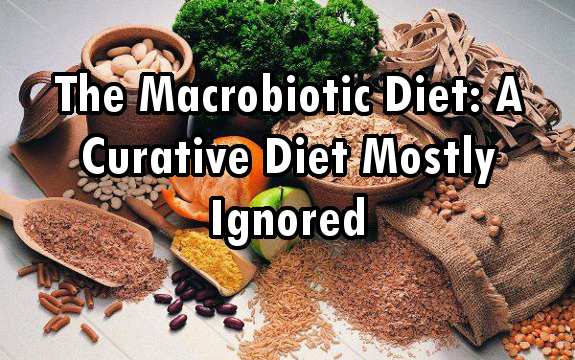The Macrobiotic Diet: A Curative Diet Mostly Ignored

 A diet heavy with grains cuts across the grain of some highly regarded alternative health practitioners and writers who believe grains create inflammation. However, the Macrobiotic diet has a long solid history of health giving success with its focus on whole organic brown rice grains.
A diet heavy with grains cuts across the grain of some highly regarded alternative health practitioners and writers who believe grains create inflammation. However, the Macrobiotic diet has a long solid history of health giving success with its focus on whole organic brown rice grains.
The fact that there are some real accounts of cancer victims healing themselves with the Macrobiotic diet alone is not well known, even among alternative practitioners.
Basic Macrobiotics
The Macrobiotic diet was introduced to America in the 1960s by George Ohsawa’s book You Are All Sanpaku, translated to English by William Duffy. Some may know George as Sakurazawa Nyoiti. The term sanpaku means three whites, and it is applied to the white area of one’s eyes showing on three sides of the colored iris. It indicates the sanpaku person has low energy and vitality and his/her nutrition is out of balance.
The balance is associated with the Chinese properties of yin and yang. All foods are categorized as yin, yang, or neutral or balanced.
In the 1960s, it was not uncommon to go on an all brown rice diet with the prescribed fermented soy sauce for a week or two in order to break through a spell of very bad health, or just as a cleansing fast. I did so during my post hippie days with good success for my toxic condition.
But there is much more to macrobiotics than just brown rice, although it is a staple. The diet focuses mostly on grains and legumes with some vegetables and sea veggies (seaweeds), very little fruit, and no animal meat, although some macrobiotic dieters allow for a little fish.
Some raw food is considered acceptable, but light cooking, usually steaming or stir frying, is the preferred method of preparing macrobiotic foods. Although there are a few dissidents within macrobiotic circles, the macrobiotic diet mostly shuns supplements.
After its introductory impact in the USA, the health-conscious public’s interest in macrobiotics waned. The notion of treating serious disease by diet alone was not understood very well at that time, and as a method of getting healthier and staying healthy, it was considered too strict and severe by most. Their taste buds were not being satisfied, and it was considered too much hassle.
A feature of macrobiotics that should be applied to all eating is chewing longer. It helps digest better and let’s you become more aware of when you’ve had enough to eat.
Macrobiotics Today
Though word of mouth helps, macrobiotic dieting has survived over recent decades largely through the efforts of Michio and Gabriel Kushi`s books and their involvements with establishing training centers for macrobiotic principles, food selection, and cooking.
Many of those who have adopted the macrobiotic diet as a lifestyle did so after being stricken with life threatening diseases such as cancer or debilitating chronic issues such as Type 2 diabetes, chronic fatigue, and fibromyalgia. They were magically led to macrobiotics, tried the diet strictly, and recovered quickly and painlessly.
It’s easy to see how those who recovered from those severe situations would continue on the macrobiotic diet as a way of life and encourage others to do so. Some other cancer recovery testimonies are even more dramatic than the cancer ‘cure’ story related by Ken Walles, linked earlier in this article.
The main USA Kushi Institute Macrobiotic center in Massachusetts offers a seven day retreat that will get you on the way if you’re interested. The Kushi Institute of Europe is available for those across the pond.

Grains?, what a joke. its fine for cancer but not digestive issues.